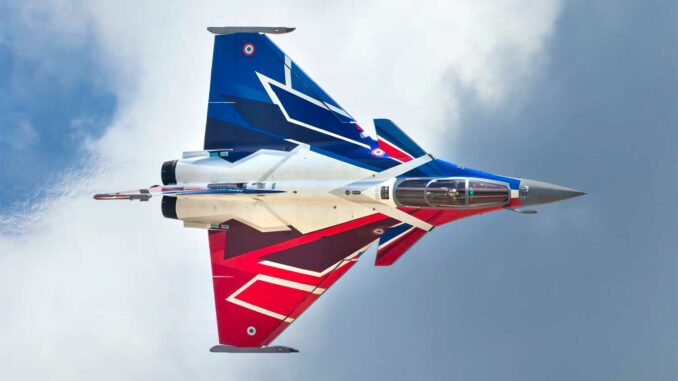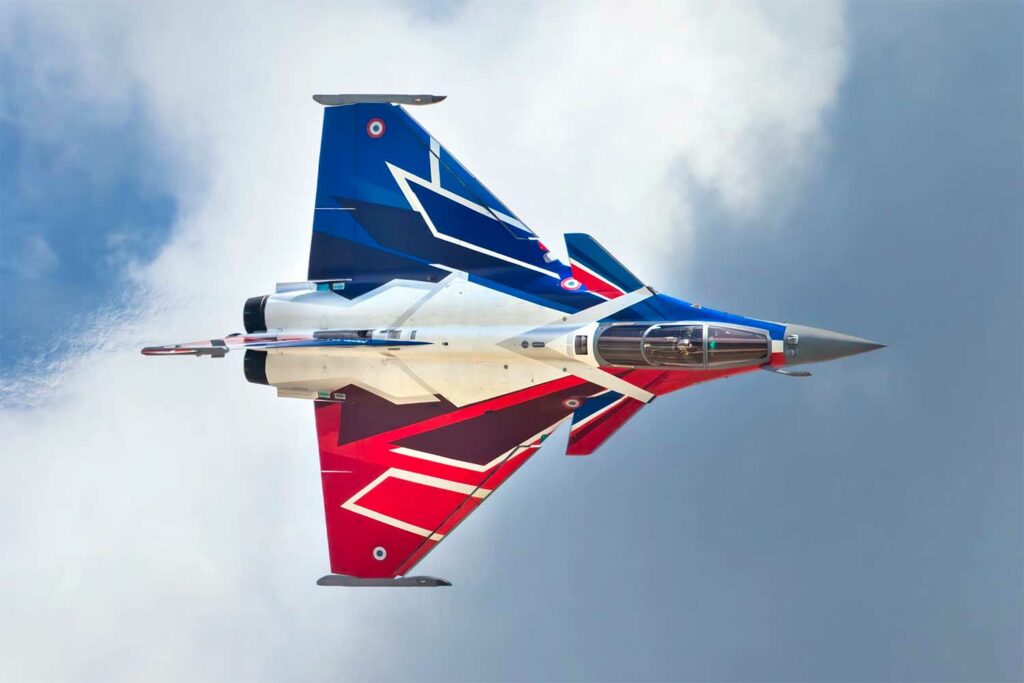
A detailed analysis of the 2025 Paris Air Show and its advances in fighter jets, transport, refueling, and military innovations.
From June 16 to 22, 2025, the International Paris Air Show in Le Bourget devoted a large part of its presentations to the current and future capabilities of military aviation. In an atmosphere firmly focused on operational uses, manufacturers and armed forces showcased a complete range of air combat systems, from multi-role fighter jets to heavy transport platforms, refueling aircraft, and next-generation training aircraft.
Among the most closely watched aircraft, the Dassault Rafale took center stage. The French manufacturer unveiled the characteristics of the future F5 standard, which will mark a significant evolution of the program. This new standard will include, among other things, the ability to operate in a network with an autonomous combat drone, greatly expanding tactical possibilities in contested environments.
Flight demonstrations highlighted data fusion, high maneuverability, and robust communication links. The innovations presented aim to provide full coverage of the air spectrum, from very low altitudes to exo-atmospheric layers, with sensors capable of simultaneously tracking multiple targets, including stealth and very small ones.
Technical developments include the adoption of conformal fuel tanks that increase the Rafale’s range by 20%, and the integration of the new AESA RBE2-XG radar, based on GaN (gallium nitride) technology, designed to identify low-signature threats such as small drones. This system, which is currently being validated, could represent a major advance in terms of information superiority and resilience to jamming and decoys.
The Rafale F5 and its tactical drones
The Dassault Rafale was one of the highlights of the event. The F5 version, still in the prototype stage, stood out with the presentation of an innovative duo: a two-seat Rafale B fighter equipped with an RBE2-XG (GaN AESA) radar and the ability to pilot an onboard stealth combat drone, demonstrating the aspirations of military innovation in collaborative combat. The RBE2-XG radar increases detection range and processing power, enabling simultaneous surveillance of multiple targets, including stealth and very small targets at low altitudes.
The main concept is based on human-machine synergy: the Rafale pilot controls the drone, extending its detection and intervention perimeter, particularly in defended or congested areas. The drone contributes to electronic warfare, tactical reconnaissance, and deep penetration missions. The Ministry of the Armed Forces aims to bring it into service around 2030, with an initial order for 45 aircraft (including 12 for the Navy).
On the ground, in the manufacturer’s hall, a full-scale model of the combat drone illustrated its dimensions – approximately 15 m wingspan, 10 m length, 2.5 m height, weighing 10 t empty. The F5 standard will include the ability to launch an ASN4G hypersonic nuclear missile, as well as spectral enhancements via Spectra, a denser electronic warfare interface.
Projection and refueling capabilities
The Ministry of the Armed Forces’ stand also highlighted support aviation. The presence of the E-3F AWACS, Mirage 2000D, PC-21 and A400M confirmed the focus on a comprehensive air superiority system. Anti-drone exercises (XLAD25) revealed the importance of multi-layered airspace coverage: interceptors, helicopters, drones, and surface-to-air systems (Mamba, Crotale NG).
These platforms enable autonomous long-range projection. The A400M, for example, can carry up to 37 tons of cargo over more than 8,000 km, a crucial asset for external operations. In-flight refueling, demonstrated with the Rafale and the A330 MRTT, highlighted the operational continuity offered by these systems.

Tactical demonstrations and flight capability of the Rafale
In flight, the Rafale C, piloted by Captain “Mimous” (Jean-Brice Millet), performed precise technical demonstrations: acceleration, tight turns, and low-speed maneuvers. This demonstration was intended to illustrate its multi-role capabilities: air-to-air combat, air-to-ground strike, reconnaissance, refueling, and nuclear deterrence—the platform can carry 1.5 times its empty weight in fuel.
The flight demonstration highlighted the fusion of multi-sensor data (radar, OSF, Spectra), enabling the simultaneous detection, tracking, and engagement of multiple targets, a significant strategic advantage. The OSF, meanwhile, can identify a target at a distance of more than 50 km thanks to its infrared capability.
Global trends and industrial challenges
Beyond the Rafale, the show amplified the trend toward interconnected aviation: SCAF/NGWS, the future European architecture, aims for complete integration between fighters, drones, refueling systems, and satellites. The SCAF demonstrator, whose first flight is scheduled for 2029 and entry into service around 2035, illustrates a collective Franco-German-Spanish ambition.
Manufacturers presented models of the demonstrator, as well as scalable solutions: radar shielding, electronic warfare capabilities, and high-speed Ku-band links. The sector is preparing to face hypersonic threats and micro-drones, and to ensure the security of airspace and space.
The 2025 Paris Air Show confirmed the technological trajectory of military aviation: multi-role, interconnected, collaborative. The Dassault Rafale, particularly in the F5 standard, embodies this transformation with its on-board drone, latest-generation AESA radar, and enhanced offensive and defensive capabilities. The emphasis on 3D airspace protection, anti-drone warfare, and tactical projection and refueling underscores a comprehensive strategy.
From an industrial perspective, the SCAF demonstrates that Europe is investing in structured technological sovereignty. For specialists, the challenge now lies in mastering the integration of complex systems: data links, electronic warfare, autonomous drones, and micro-affordable threats. Le Bourget 2025 was therefore a technical, operational, and strategic turning point for the military aviation sector.
War Wings Daily is an independant magazine.